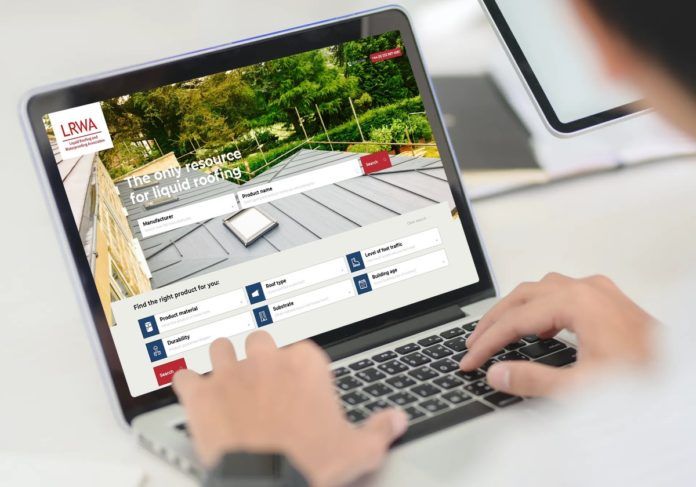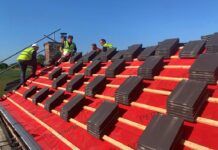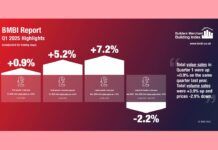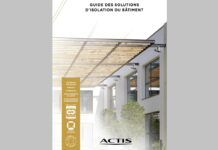Sarah Spink, chief executive officer of the Liquid Roofing and Waterproofing Association (LRWA), explains how new resources and tools will ensure liquid-applied membranes are specified and used correctly.
In response to Dame Hackitt’s Building a Safer Future report, a considerable amount of work has been undertaken over the last three years, which is driving transformational change. New measures are being implemented to prevent the use of inappropriate construction products and combinations, underlining the importance of correct specification.
With so many liquids now available on the market, selecting a suitable product can be challenging. However, the launch of a number of new tools and initiatives will help contractors and specifiers to make the right choice and ensure best practice is followed.
Addressing misleading claims
Developed by the Construction Products Association (CPA), the proposed Code for Construction Product Information (CCPI) has been designed to ensure manufacturers provide clear, accurate, and up-to-date product information, reducing the risk of misleading marketing claims.
The CCPI has been developed by the marketing integrity group (MIG), which was set up by the CPA in response to recommendations outlined in the Hackitt report. It comprises 11 clauses which each one addressing different areas in the product life cycle, ranging from the creation of product information, through to dealing with performance data, and ensuring individuals involved in creating and communicating product information are competent to do so.
The LRWA is a member of the CPA and volunteered to be part of the MIG. With input from professionals who work across the roofing industry, as well as other sectors, we played a key role in developing the CCPI. Our main area of focus was guarantees and the issue of mis-selling. To address this concern in roofing – and the wider construction sector – we developed clause nine in the CCPI, which states the following below.
“When making any claims of guarantees/warranties, your website must state what is covered, excluded, and required to comply with its terms. The guarantee/warranty should be transparent, and in a format recognised by the relevant sector of industry.
The CCPI is due to launch later this year following an industry-wide consultation.
Verifying product performance
To help contractors, specifiers and distributors verify the performance of a liquid roofing system, the LRWA has launched a Product Register. This free, online tool compiles information from third-party certifications into an easy-to-read format, enabling anyone seeking to install or specify a liquid waterproofing solution to make an informed decision.
The Product Register has been designed to address concerns that the detail in agrément and ETA certificates is not being fully read or understood properly. This can lead to inaccurate assumptions or a reliance on manufacturers’ product claims, some of which can be misleading.
It allows the user to search for a preferred manufacturer via a drop-down list or a product name if known. Alternatively, if the user is unsure about which liquid roofing system to use, they can carry out a search using six filters, which will create a random list of potential products.
The filters include the material, for example, polyurethane; the type of roof that needs waterproofing such as inverted, pitched or a terrace; the level of foot traffic; the required lifespan of the roof area; what type of substrate will be coated; and whether it is a newbuild or a refurbishment project.
Every product in the Register is listed with key features and a link to further information, such as approved applications, evidence of durability, and properties in relation to fire. There is also a function that allows different liquid systems to be compared.
Adopting best practice
Liquid-applied membranes must be specified in line with British Standards and UK Building Regulations, and there have been key changes to both within the last few years, especially in relation to fire safety and performance.
Keeping on top of these changes has been challenging and some of the updates have caused confusion across the sector. This has led to a number of queries relating to the impact on waterproofing flat roofs, balconies and walkways.
To overcome these issues, the LRWA has developed ‘The Design Guide for Specifiers – Liquid Applied Waterproofing Systems for Roof and Balconies.’ This document offers extensive technical information and advice to help readers correctly specify liquid roofing systems.
Best practice advice is provided on a wide range of specification factors, such as the performance criteria for liquid systems, design considerations, and the materials that may be used as part of a roof build-up.
Taking responsibility
The huge change taking place across the construction industry means it is crucial to select products that perform to the required standard. All those involved in the specification and installation of liquid systems are advised to take advantage of the independent advice and technical tools available from trusted trade associations such as the LRWA.




